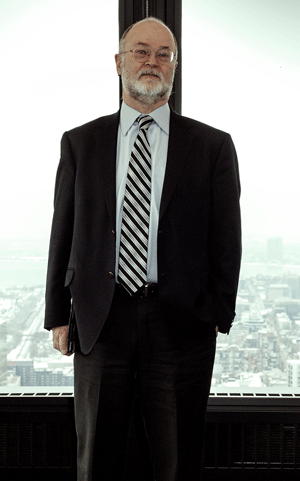The Law Society of Upper Canada has approved an absolute cap of $25,000 on referral fees. Convocation voted Thursday to implement a sliding cap, which will see referral fees be limited to 15 per cent of the first $50,000 charged in legal fees and five per cent of any fees on top of that, up to a $25,000 cap.

The cap was one of a number of recommendations Convocation approved in an attempt to make referral fees more transparent.
The recommendations followed an interim law society
report that found clients of some personal injury firms were sometimes unaware that they were being referred to another firm or that a referral fee was paid.
The working group also found that referral fees had been creeping up to sometimes exceed more than 25 per cent.
“The working group recognized that there isn’t a clearly right answer and that reasonable people can have different views as to what the right cap should be and the result was an attempt to not have a cap so harsh as to in effect be a prohibition, and to generally try to achieve a reversal of the increases experienced and to get referral fees back to where they were historically,” says Bencher Malcolm Mercer, who is chairman of the Advertising and Fee Arrangements Issues Working Group.
Convocation opted for a cap rather than an outright ban of referral fees at its February meeting, but the working group has since determined the amount of the cap, in addition to the details of a number of transparency measures.
The transparency measures Convocation approved included a requirement that lawyers fill out a standardized form for referral fees. The form will have to be signed by the referring lawyer and the lawyer receiving the case, as well as the client.
David Sterns, president of the Ontario Bar Association, says that while he is supportive of the recommendations, the form is “a bit over the top.”
“The key point is that the client is aware of the fees. Adding on a requirement that an agreement be signed by three parties seems to me to be too much paperwork for questionable results,” he says.
“The key is that the client needs to know about the referral fees, but lawyers shouldn’t be put to a requirement to have three-way agreements to establish that.”
Lawyers will also be required to record referral fees in their books going forward and will have to submit information to the law society concerning their referral fee practices in their annual reports.
The law society also banned upfront prohibition fees, meaning lawyers will be unable to go to a number of lawyers to shop around for the largest referral fee before referring the matter.
Mercer says that rather than having an incentive to get the biggest payment upfront, the referrer will ideally look for whoever will get the best return for the client and, therefore, the best return for them. The prohibition will, therefore, align the interests of the client and the referring lawyer, Mercer says.
The working group is still set to tackle advertising issues in the real estate bar, as well as contingency fees. Mercer says he expects recommendations on those issues could come before Convocation in late spring or early fall.
At its meeting in February, Convocation also approved changes to advertising that would include a requirement that licensees identify whether they are paralegals or lawyers in their advertisements and a ban on lawyers advertising work they have no intention of doing.
Convocation also introduced a ban at that meeting on second opinion advertising, which encourages clients who have already retained lawyers to switch to the advertiser.
For more information on the Law Society of Upper Canada’s sliding cap on referral fees, see the digital or hard copy edition of Law Times
this coming Monday (May, 1, 2017).

